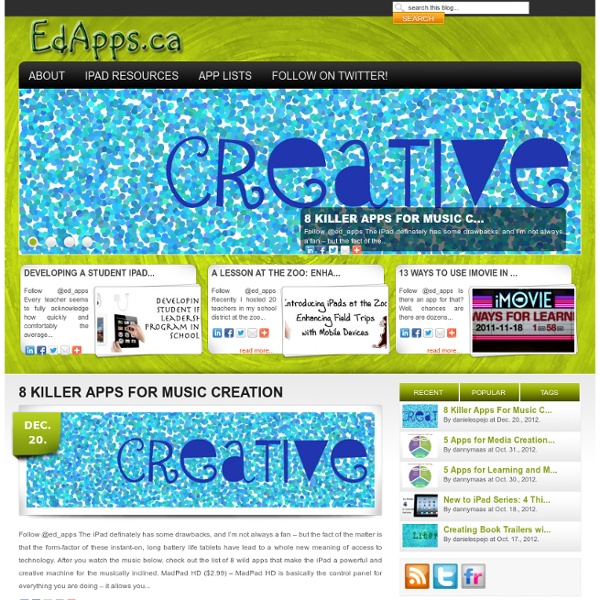



ncom_ind_prod_paprpt_ppt Digital note-taking done right Take note taking to a whole new level by leveraging your iPad to capture handwritten notes, typed text, images, web content, and audio. PaperPort Notes even allows you to take advantage of the world's leading voice recognition software (Dragon Dictate) to capture your ideas and notes simply by speaking. In addition to the many ways PaperPort Notes enables you to capture information, it also allows you to combine it with other content from the web, your favorite cloud storage system, or even PaperPort Desktop. You won't want to ever attend another meeting or lecture again without it. The results: Increased productivity. Features Features: Tech Specs Tech Specs: Hardware: iPad OS: iOS 4.2 or later ShowMe - The Online Learning Community
TodaysMeet 50+ Web 2.0 Ways to Tell a Story Alan Levine • cogdogblog.com • cogdogblog@gmail.com All materials at 50ways.wikispaces.com/ Not long ago producing multimedia digital content required expensive equipment and deep levels of technical expertise. This session will cover a basic process that can be used to create a story in a web 2.0 tool using images, audio, and/or video. I discovered more than 50 tools for anyone to creatively use. 50+ Ways Presentations Best Android apps for high school students Some say high school is the most fulfilling time of one’s life, while others think it’s all about survival. Growing up isn’t easy, especially when you realize that there is a high school waiting for you. A few years back, it would have been a nuisance to do research work with the available resources, which weren’t much to talk about (imagine a life without Wikipedia). In this post we will showcase ten handy Android apps that can help you survive high school. Wikipedia We all know that Google is a student’s best friend, but that’s only because it often redirects him or her to Wikipedia. The official Wikipedia app not just helps speed up research via Wikipedia, but also provides the utility to check back at saved articles when there is no Internet connectivity. Google Translate Speaking of translations, the official Google Translate app for Android is an excellent app for instantly translating text between various languages. OfficeSuite Viewer 6 Google Drive Advanced English & Thesaurus
Blogger Settings This is a post I had simmering in the back of my mind for a while until this morning when someone asked how I was able to publish posts so quickly. The truth is that while sometimes I do write a bunch of posts in quick succession, I often use the scheduling tool in Blogger to publish posts. I use the scheduling tool when I know I will be away from my computer or think that I won't have time to write on a particular day. Click on the images below to view them in full size and see the details contained within them. How to schedule posts: In the new Blogger interface. In the old Blogger interface. How to prevent publishing your email address in RSS feeds: I often see Blogger users publishing their email addresses in RSS feeds. How to insert an RSS feed footer message: If you read this blog in RSS you may have noticed that I recently started publishing this line at the bottom of every post, This post originally appeared on Free Technology for Teachers. In the new Blogger interface.